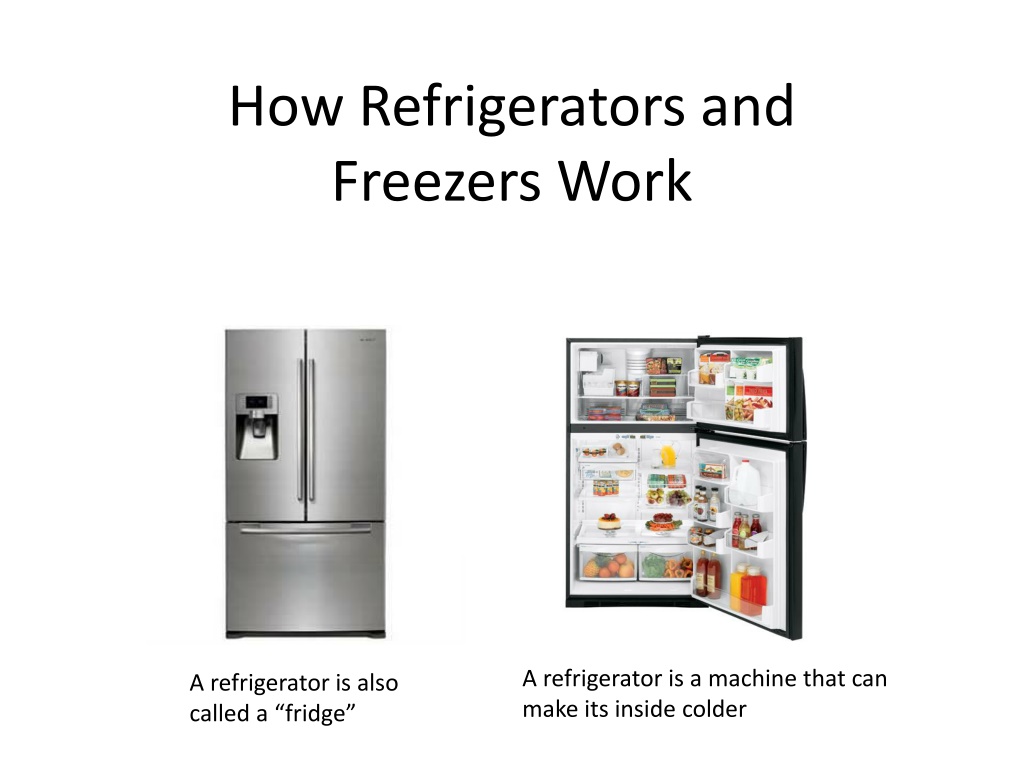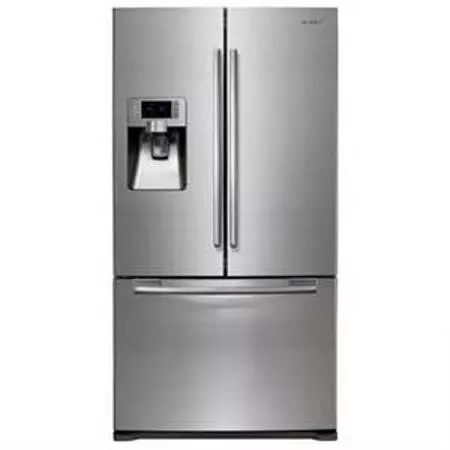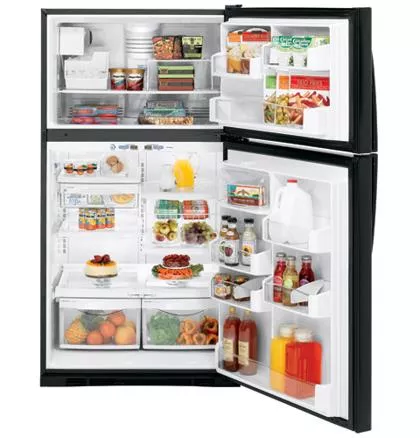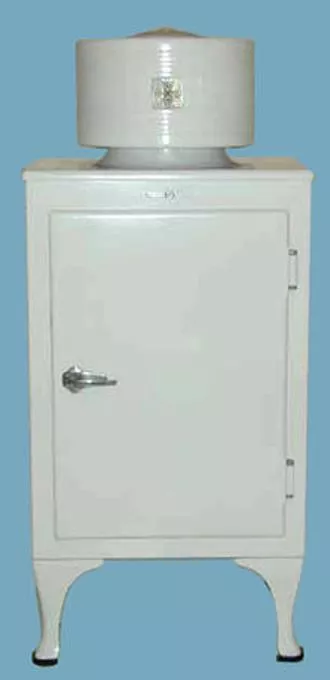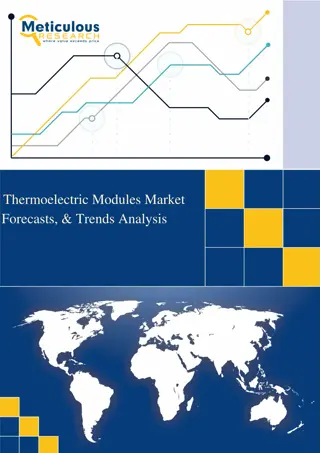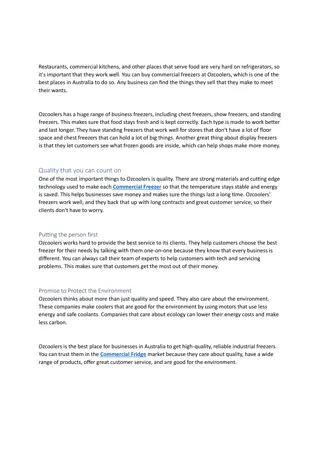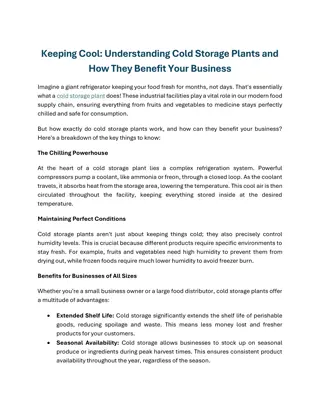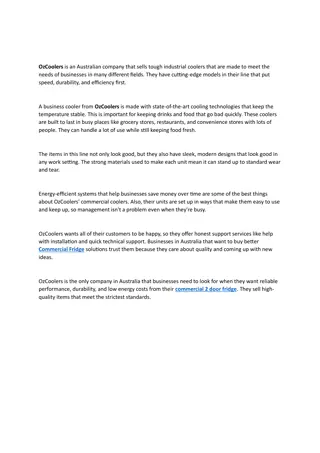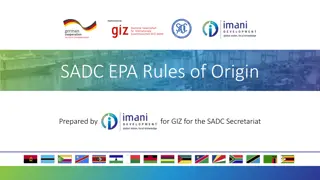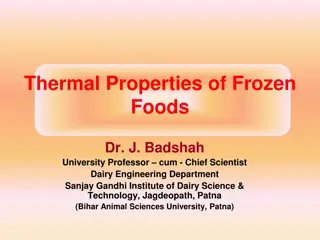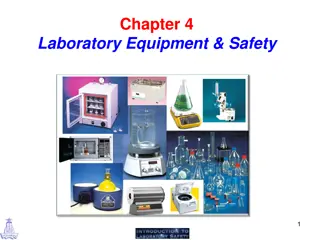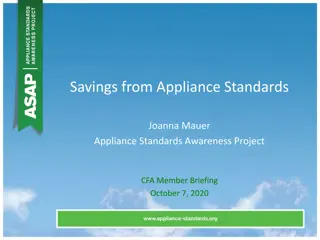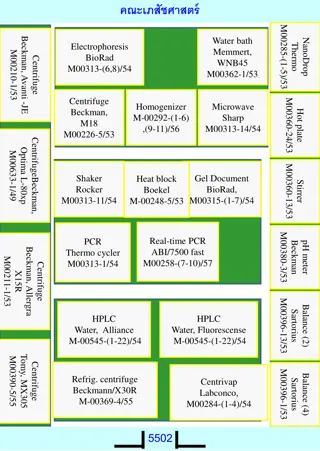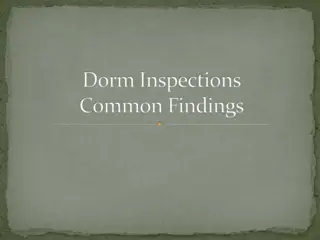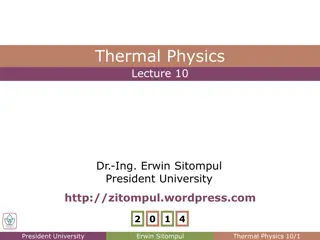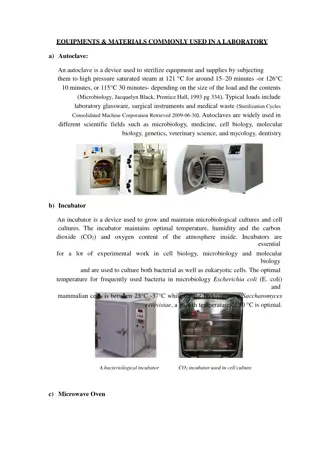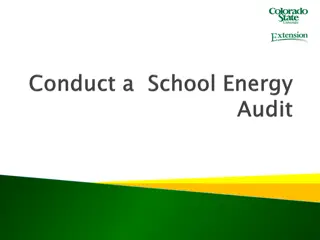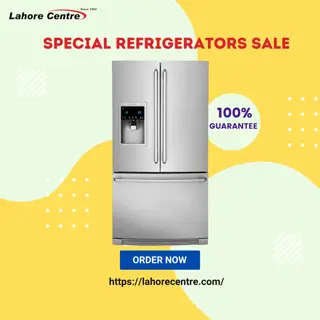How Refrigerators and Freezers Work
A refrigerator, also known as a fridge, operates by maintaining a set internal temperature through a system involving a compressor, refrigerant, coils, and an expansion valve. Learn about the functioning and history of refrigerators from ice usage to modern technology advancements.
Uploaded on Feb 19, 2025 | 0 Views
Download Presentation

Please find below an Image/Link to download the presentation.
The content on the website is provided AS IS for your information and personal use only. It may not be sold, licensed, or shared on other websites without obtaining consent from the author.If you encounter any issues during the download, it is possible that the publisher has removed the file from their server.
You are allowed to download the files provided on this website for personal or commercial use, subject to the condition that they are used lawfully. All files are the property of their respective owners.
The content on the website is provided AS IS for your information and personal use only. It may not be sold, licensed, or shared on other websites without obtaining consent from the author.
E N D
Presentation Transcript
How Refrigerators and Freezers Work A refrigerator is a machine that can make its inside colder A refrigerator is also called a fridge
A short history of refrigerators Before the refrigerator was invented, some people would use ice from frozen lakes to keep food cool, but it was difficult and expensive to move so much ice The first refrigerator used by many people was the "Monitor-Top" refrigerator starting in 1927 Home freezers started being used in the U.S. in 1940 http://upload.wikimedia.org/wikipedia/en/thumb/c/cf/Monitor_refer.jpg/220px-Monitor_refer.jpg A Monitor-Top refrigerator
How it works: Step 1 When the temperature inside the refrigerator is above a certain set temperature, the thermostat turns on a compressor A thermostat is a thermometer that can turn something on A compressor is a machine that can squeeze a gas, which makes it have a smaller volume The compressor is what you hear humming A compressor is like an electricity- powered bicycle pump A thermostat may look like this
Step 1 continued The compressor then squeezes the refrigerant, which is a fluid used for cooling. The refrigerant is a gas at this time This squeezing of the refrigerant causes it to increase in pressure and temperature Remember: P1 P2 T2 = T1 If pressure goes up, temperature goes up This shows how a gas can be compressed (squeezed)
Step 2 The very warm refrigerant goes through a coil outside (usually behind) the refrigerator where it loses heat to the air outside A coil is a long, snake-like tube This outside coil is called the condenser coil because as it cools, the refrigerant changes from a gas to a liquid (condenses) and gives off heat Left: compressor Right: condenser coils
Step 3 After the refrigerant has cooled down from giving heat to the air outside the fridge, the expansion valve opens to let the liquid refrigerant pass through it, into the coils inside the refrigerator A valve is a small hole that can be opened or closed, and expansion means getting bigger, so what does expansion valve mean? This is an expansion valve
Step 4 The pressure on the other side of the expansion valve in the evaporator coils is low The pressure is low because the compressor has pulled the refrigerant out of that side in step 1 This low pressure makes the refrigerant change from a liquid to a gas (evaporate) and take in heat Remember: P1 P2 T2 = T1 If pressure goes down, temperature goes down Evaporator coils inside a freezer
Step 4 continued The refrigerant expands (gets bigger) as it goes through the expansion valve It also decreases in pressure and temperature The refrigerant absorbs (takes in) heat from inside the refrigerator because it as a lower temperature The refrigerant is now ready for step 1 again! Remember: P1 P2 T2 = T1 If pressure goes down, temperature goes down
Summary of the 4 steps Step 3: The refrigerant liquid goes through the expansion valve and turns back into a gas. Pressure , Temp. Step 2: The refrigerant goes through the condenser coils. It gives off heat to the surrounding air and condenses to a liquid Step 4: The refrigerant goes through the evaporator coil and absorbs (takes in) heat from inside the refrigerator Step 1: The compressor squeezes the refrigerant gas. Pressure. , Temp. ,
